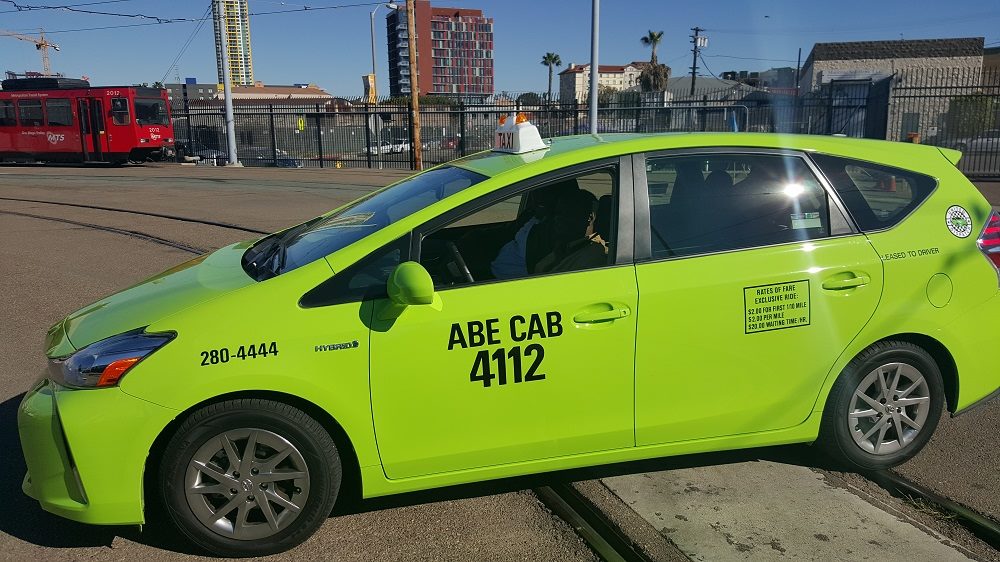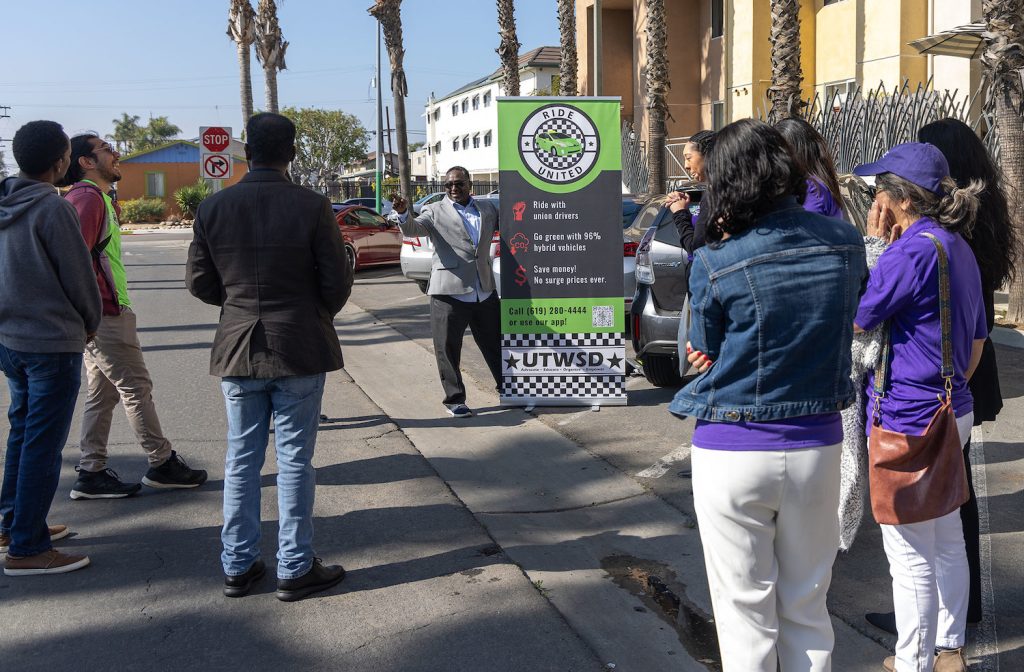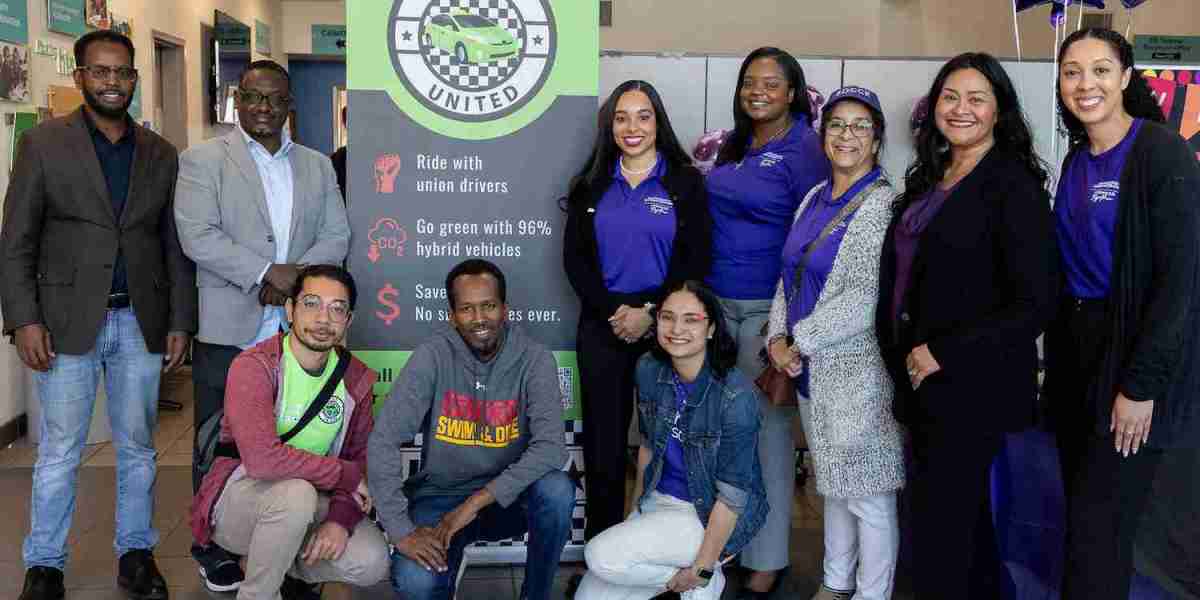In 2012, Jama Ali was working as a taxi driver at night and driving a Lincoln Town Car in the afternoons. He was waiting near the Catamaran Resort in Mission Bay when someone approached him, offering him money to switch to driving for a company called Uber.
“I don’t know how much—it was $300 or something if you [signed] up for the app,” says Ali, who moved to the United States from Somalia. “Everything was new at that time, the apps and all the stuff. So we grabbed that money, me and two other drivers, and then set up Uber.”

Things went well for a while, but Ali started having problems with the company. He was responsible for paying for all the wear and tear on his car, and, because Uber took a chunk of his fares, he struggled to make enough money. Then, in 2020, the company—along with Lyft and other app-based rideshare businesses—spent millions of dollars to pass Proposition 22, which classified drivers like Ali as independent contractors instead of employees.
Ali feels that, after that happened, he started bringing in even less income.
“I [had driven for] a long time, and then Uber built all those regulations on us,” he says. “They take advantage of the drivers. It’s hard to make money with Uber. The price [per ride] is less for you, more for them. You can’t argue with anyone because they have money and power.”
Uber did not respond to a request for comment. Ali quit working for the company and went back to driving taxis, meaning he pays for a taxi medallion, a form of permit from the city of San Diego. Recently, he’s begun using a new platform which he says is trying to help taxi drivers like him.
“I believe that technologies can help people do things more effectively, but they’re so often prioritizing the values of those who are basically middle-class professionals or the owners of companies,” Irani says. “So building technologies that are actually controlled by the people who are most impacted by them is a core mission of mine in life.”
She says she wants the project to prove that you can create a technology platform that’s not exploitative, one where workers have a say. “And my hope is that by showing that it is possible here with Ride United, that we can also pursue other places in our society where that kind of publicly supported or membership-supported software can be a better alternative to what tech companies are giving us,” she adds.
According to Irani, the app has facilitated 172 rides since its launch in December. Peter Zschiesche and Mikaiil Hussein with United Taxi Workers also helped secure contracts with the city of San Diego during the recent floods, setting up taxi rides from residents’ homes to storm shelters. Another contract with the San Diego College of Continuing Education connects taxi drivers with students who need to commute between different campuses.
The Ride United team is also launching email campaigns, arguing that their model is more environmentally sound—because the majority of taxis are hybrid vehicles—and better for workers.

“This is also about making sure that the drivers have a voice in how the platform treats them,” Irani says. “The [Ride United] drivers are deciding how much of a fee they’re willing to pay to help with the upkeep of the software—it ends up being between 4 and 6 percent of the fare. Also, the money stays in the community. United Taxi Workers is a nonprofit. You, as a rider, put money into the driver’s pocket, and it all stays in San Diego and gets spent here on things people really need.”
Irani says the focus right now is prompting riders to use the app for pre-scheduled rides, so drivers know in advance to pick someone up. If someone uses it to call a ride on demand, it can take a bit longer. She notes that it’s comparable in cost to platforms like Uber and Lyft for shorter rides, but it can be more expensive for long trips.
However, Ali points out, there’s no surge pricing. “If it’s Fourth of July, New Year’s Eve, all the holidays, we do the same price,” he says. “If it’s $20, [it’s] $20. That’s it.”
Rider Jacob Van Dehy, who found out about Ride United from the Democratic Socialists of America, appreciates that aspect of the app, too. “Surge pricing was always a pain coming back from the bars at, like, 2 a.m.,” he says.
More importantly, though, he values the app’s commitment to supporting drivers. “I think it’s appealing because it keeps more money in the driver’s pockets,” he says. “Uber and Lyft take an increasingly large cut of the cash that all the drivers make.”
Van Dehy used Uber and Lyft in the past, but now he only uses Ride United.
“I’ve definitely started getting push-notification targeted ads from Lyft saying, ‘Hey, you haven’t used the app in a while. We’re giving you 20 percent off,’” he notes. “Which is pretty funny.”


